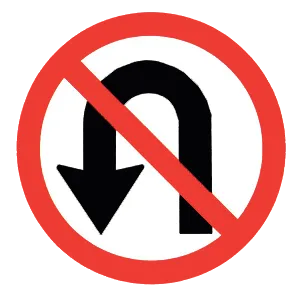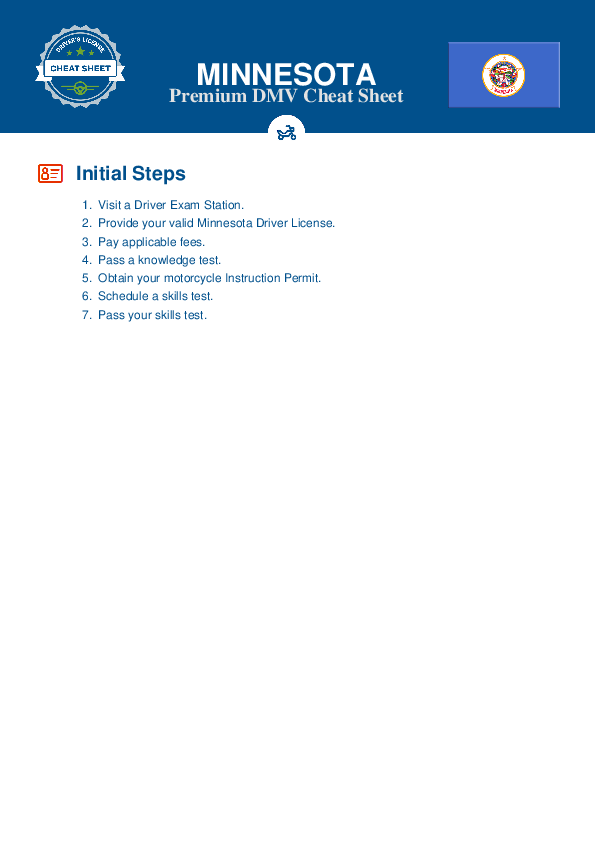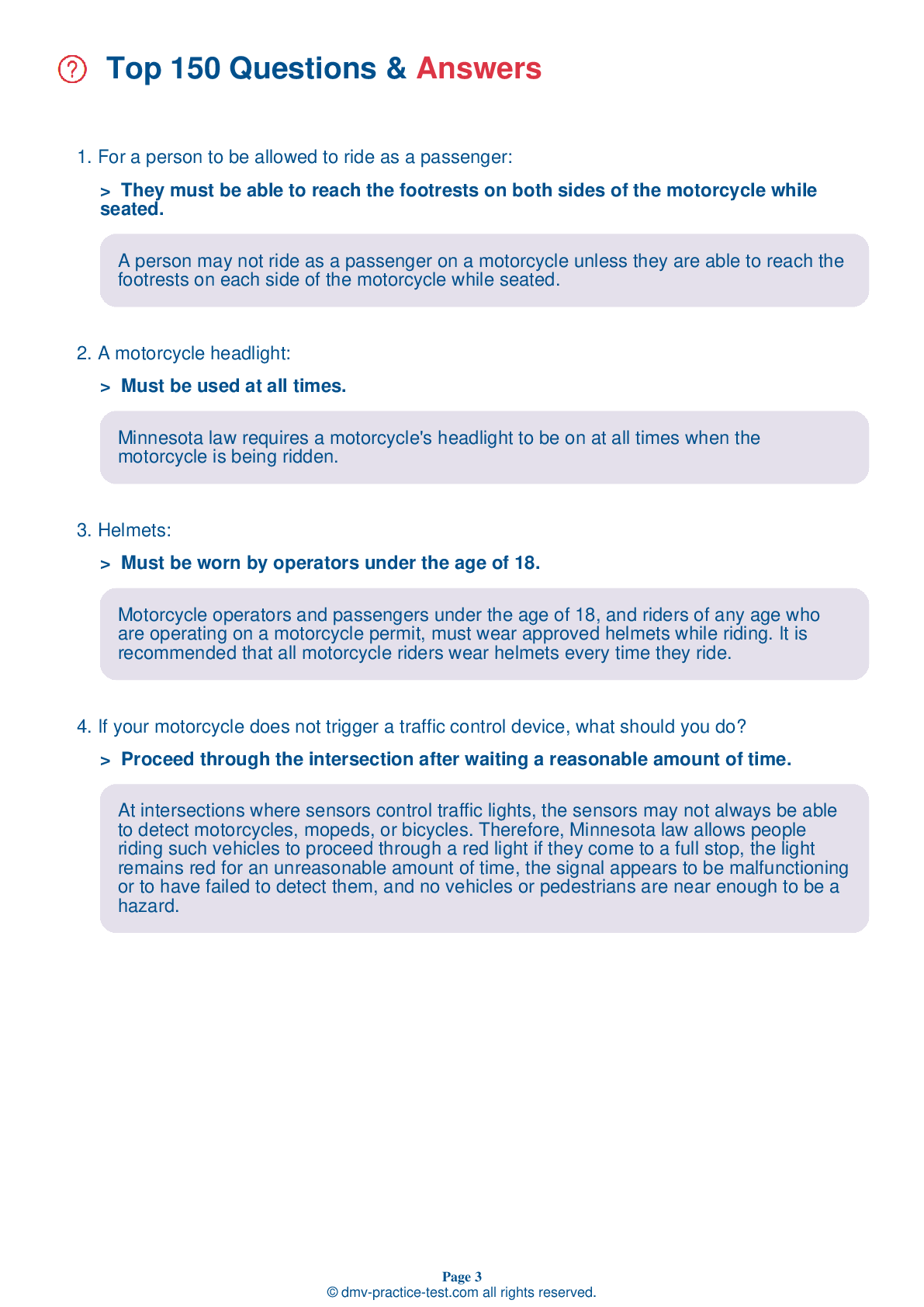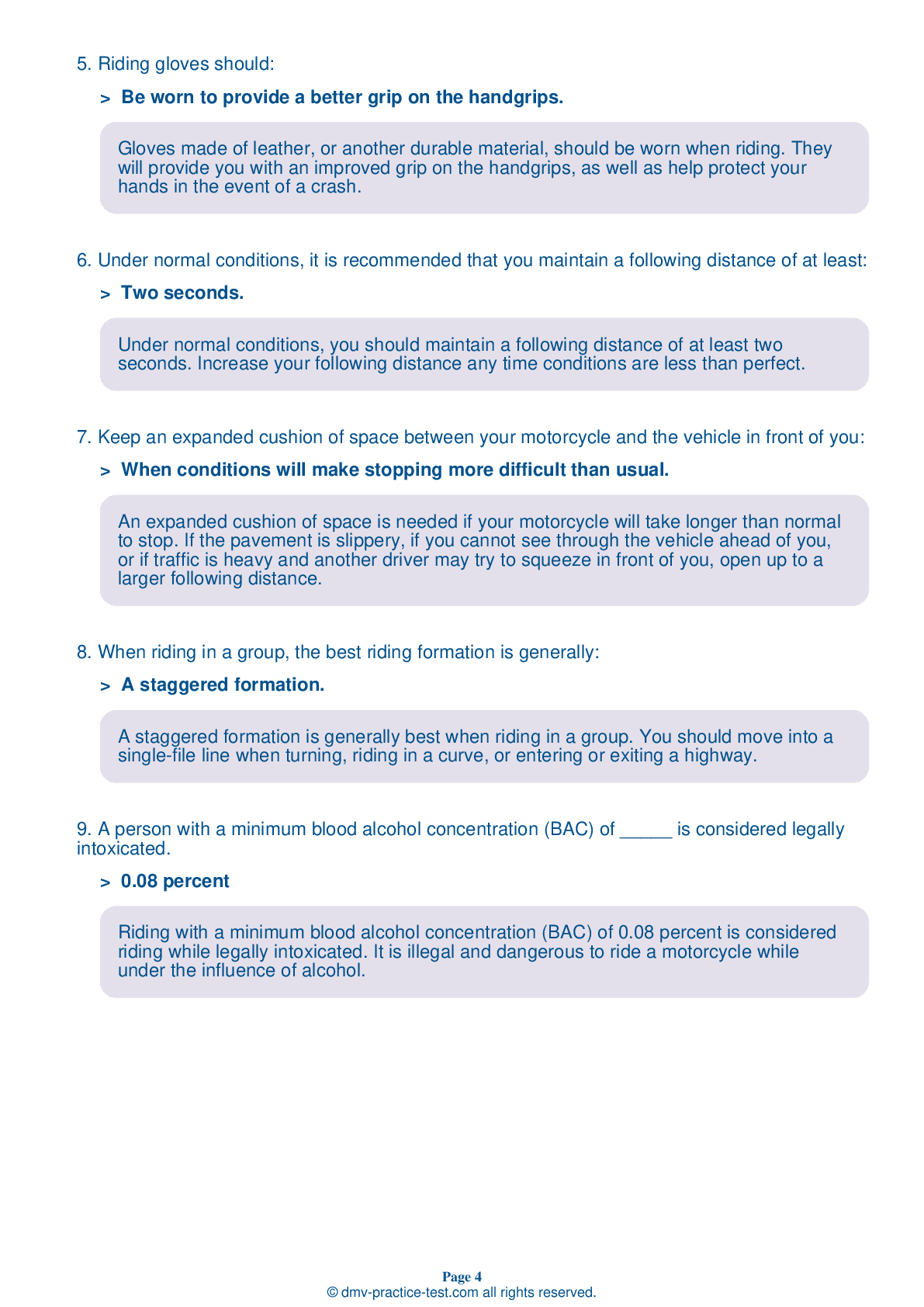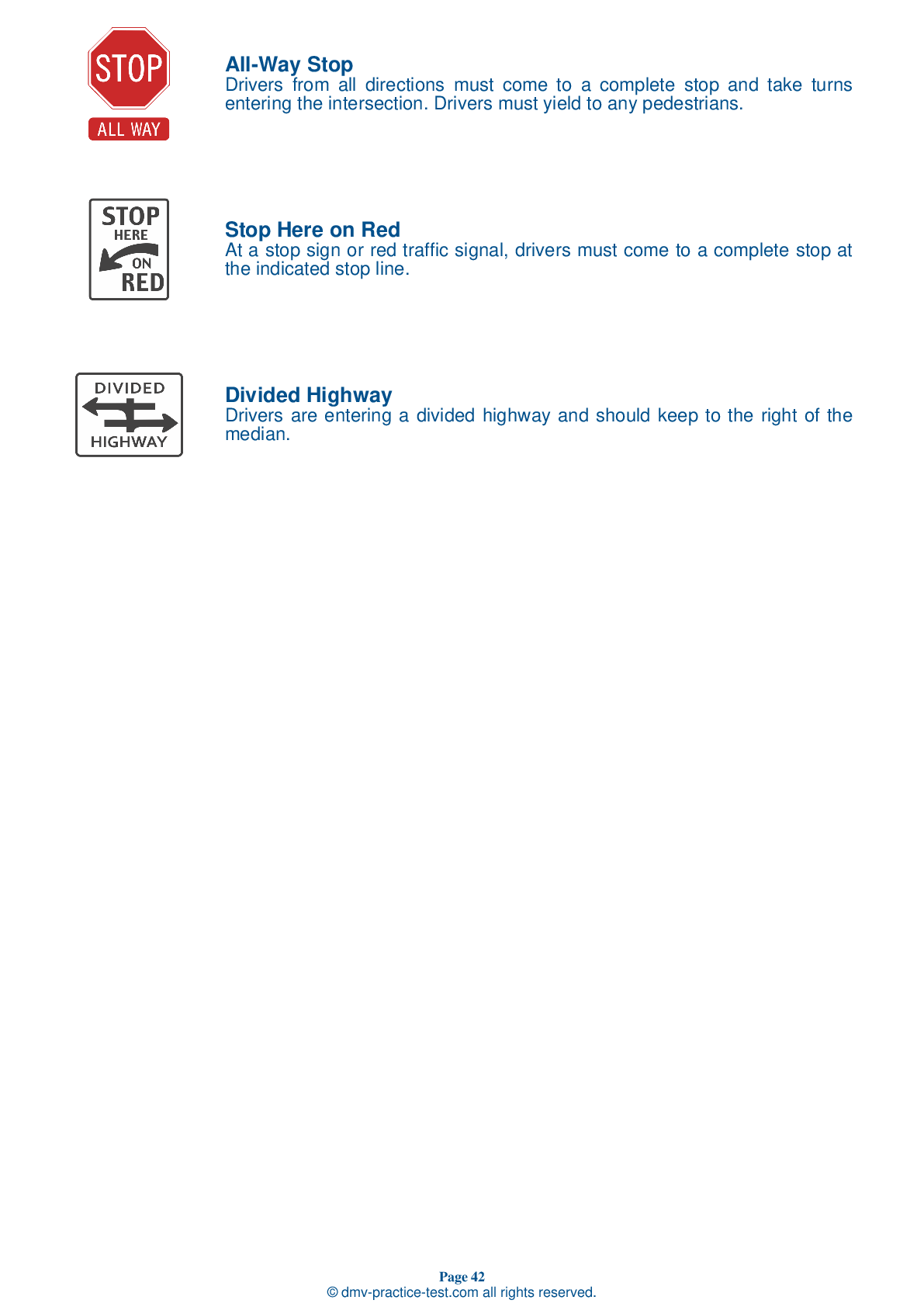Motorcycle Test | License MN 2025 | FREE Online Practice! #9 Page 4 of 5
Take this FREE motorcycle test (license in MN 2025) to check your knowledge of the road rules. To improve your results, download a motorcycle handbook online, study theory, and practice for free on our website. Still worried about how to get a motorcycle license in Minnesota in 2025? Check our website for more sample tests, train as much as possible, and boost your grades!
26 . Penalties for riding while impaired may include:
If convicted of a DWI, you may face fines, license suspension, jail time, court costs, legal defense fees, an insurance rate increase, and community service. If you have been drinking, it is best to stay off your motorcycle.
27 . To increase your chances of being seen at an intersection, you should:
To increase your chances of being seen at an intersection, leave your headlight turned on and ride in a lane position that most easily allows oncoming traffic to see you. Maintain a space cushion that allows you to take evasive action if necessary. Never assume that another driver sees you, even if you make eye contact with the driver.
28 . When carrying a passenger, you should:
When transporting a passenger, you should be sure that you have a seat that is large enough to carry two people without crowding. You should not sit any farther forward than you usually do.
29 . When you have mounted your motorcycle, you should do all of the following, except:
After mounting your motorcycle, you should make sure the clutch, throttle, horn, and brakes all work properly. Clean and adjust the mirrors and make sure that the fuel supply valve is open.
30 . When riding in a group, the best riding formation is generally:
A staggered formation is generally best when riding in a group. You should move into a single-file line when turning, riding in a curve, or entering or exiting a highway.
31 . The middle portion of the lane usually contains an oily strip. You should:
Oily drippings from cars and trucks build up in the center of each lane. Unless the road is wet, this strip usually still provides enough traction more a motorcycle to operate safely. The strip is generally narrow enough that you can ride to either side of it and still be in the center portion of the lane.
32 . Shifting to a lower gear produces an effect similar to:
Most motorcycles have a manual transmission. Downshifting to a lower gear will slow you down.
See the exact questions that will be on the 2025 Minnesota DMV exam.
99.2% of people who use the cheat sheet pass the FIRST TIME
Jeneen was tired of paying $5/gallon. She got herself a scooter that required the motorcycle license. She studyed the motorcycle test cheat sheet and passed her test the next day!
Christopher tells us how he knew nothing prior to obtaining the motorcycle study guide, and he only got one question wrong because he clicked on the wrong answer by mistake.
